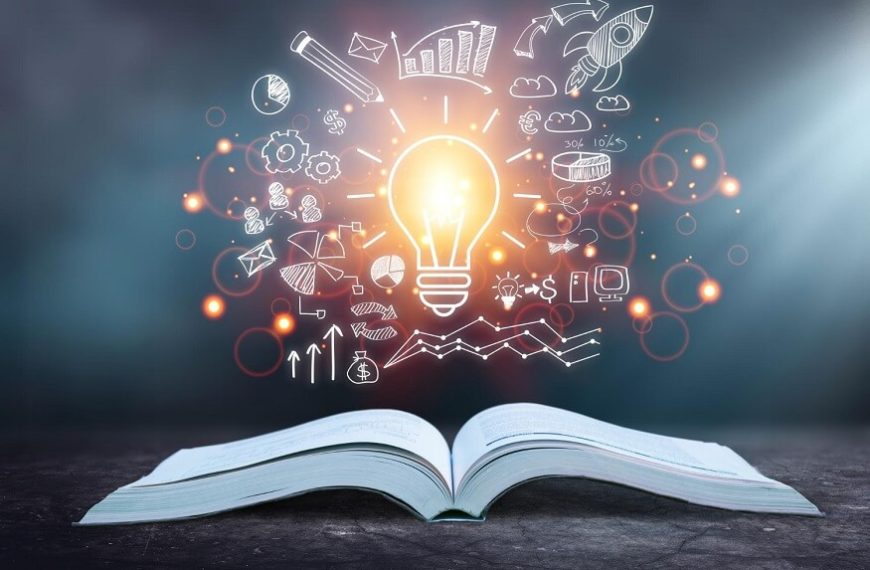In today’s rapidly evolving world, approaches to learning are rapidly evolving as well. The education landscape is transforming to meet the demands of the future classroom. Traditional educational methodologies are fast being replaced by innovative approaches to teaching and learning in a quest to equip the students with the skills and knowledge necessary to thrive in modern school and a future classroom. Modern schools are relying on cutting-edge technologies and methodologies to equip students to excel in the challenging 21st century trends in education. Educational technology has further helped in preparing the students for a competitive education landscape. These approaches foster critical thinking, adaptability, creativity, and collaboration among students. These are essential skills in an increasingly complex and interconnected world.
The approaches to learning have been observing significant changes. We have elaborated on the innovative approaches to teaching and learning that modern schools are adopting to equip students for a modern school and future classroom.
Personalised Learning
- Adaptive Learning Platforms: Schools are integrating adaptive learning platforms and softwares that help in customising content based on a student’s individual pace and style.
- Individualised Learning Plans: Teachers create individualised and personalised learning paths for students after assessing their individual strengths, weaknesses, and interests. This helps in tailoring a personalised learning path for a student’s benefit.
- Self-Paced Learning: In this learning approach, students have the agency to learn at their own pace. This helps them delve deeper into subjects and topics of their interest and master foundational concepts at their own learning speed.
Project-Based Learning (PBL)
- Real-World Problem Solving: PBL immerses students in real, authentic, hands-on experiences where they tackle real-world problems. This approach fosters critical thinking and problem-solving skills.
- Collaborative Learning: In this approach, students work in teams which simulate real-life work environments. This results in effective teamwork, communication skills, and leadership.
- Interdisciplinary Approach: PBL integrates multiple subjects which help in forming an interdisciplinary approach. It fosters a holistic learning approach which enables students to see connections between various disciplines.
1. Technology Integration
- Blended Learning: Schools combine traditional classroom experiences with a modern twist of online resources as well as digital tools in order to enhance learning experiences. Blended learning approaches has become very common in recent times in the trends in education.
- Virtual Reality (VR) and Augmented Reality (AR): Immersive technologies like VR and AR are used to engage students in interactive learning environments. This educational technology has helped students to explore concepts in a more engaging manner. Students can experience and explore historical events, scientific concepts, and distant locations through simulations to enhance their understanding in a way that traditional methods of teaching fail to deliver.
- Coding and STEM Education: Emphasis on coding and STEM (Science, Technology, Engineering, and Mathematics) education prepares students for a tech-driven future. It fosters innovation and problem-solving abilities.
2. Experiential Learning
- Field Trips and Excursions: Schools conduct frequent field trips and excursions. This helps students to learn outside the classroom and get to connect theory with real-life experiences.
- Internships and Apprenticeships: Partnerships with businesses and organisations help students learn practically in a work environment, giving them insights into the future possibilities. It prepares them for future careers.
- Outdoor Education: Nature-based learning activities promote environmental awareness, teamwork, and resilience, nurturing a deeper connection with the natural-world.
Social and Emotional Learning (SEL)
- Emotional Intelligence Development: SEL program helps students in developing a sense of self-awareness, empathy, and interpersonal skills. This is equally important for success in both personal and professional spheres.
- Mindfulness and Wellbeing: Schools have begun to incorporate mindfulness techniques and exercises as well as advocating wellbeing practices for the benefit of the students’ overall mental health and wellbeing.
- Conflict Resolution and Communication Skills: Students get a chance to learn effective communication and conflict resolution strategies. This helps to foster a healthy learning environment and appreciation.
1. Flexible Learning Spaces
- Collaborative Spaces: Classrooms are designed to facilitate collaboration, with movable furniture and interactive technology promoting teamwork spirit and interaction.
- Alternative Learning Environments: Schools incorporate outdoor classrooms and flexible seating arrangements to accommodate diverse learning styles and preferences.
- Remote Learning Options: Hybrid and remote learning options allow students to be flexible and learn from anywhere. This promotes autonomy and adaptability.
2. Global and Cultural Awareness
- Global Collaboration: Schools engage in cross-cultural exchanges. It connects students with peers worldwide. It fosters a learning environment of mutual respect, learning from each other, a global perspective and cultural understanding.
- Language Learning: Emphasis on learning multiple languages prepares students for global citizenship. It enhances cognitive abilities too.
- Diversity and Inclusion Education: Curricula focus on diversity and inclusion. It is a very important approach to promote empathy and understanding of different perspectives and backgrounds.
3. Integration of STEAM Education
- STEAM (Science, Technology, Engineering, Arts, and Mathematics): STEAM education has gained popularity for interdisciplinary learning. It encourages creativity, innovation, and practical application of knowledge. By integrating arts into STEM subjects, students develop a holistic approach to problem-solving and innovation.
4. Continuous Assessment and Feedback
- Formative Assessment: Schools are moving away from traditional standardised testing methods to include other aspects like portfolios, presentations, and projects. This helps in providing a more comprehensive view of the students’ progress.
- Timely Feedback: Immediate and constructive feedback helps students understand their strength as well as areas for improvement. It encourages a growth mindset and encourages self-reflection.
Approaches to learning are being revised at a tremendous pace to encourage trends in education and educational technology to drive the students towards a brighter and more successful future. Modern schools are adopting innovative learning approaches to equip students for the future classrooms. They are taking a more holistic approach from personalised learning, to project-based learning, to including arts to STEM. They are also incorporating values in the students through social and emotional learning, as well as global and cultural awareness. Students get to be a part of flexible learning spaces. Educational technology has taken up speed in being a part of the curriculum. The modern school is shaping a generation capable of navigating the complexities of tomorrow’s world with confidence, knowledge, skills, and competence.
For more such interesting blogs, Visit EuroKids
















